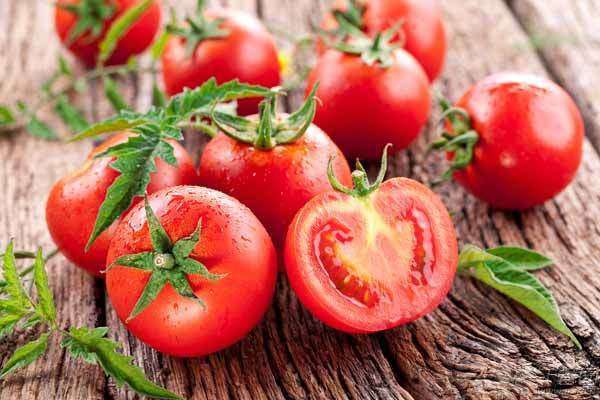
Foods suitable for diabetics should not only provide high-quality and balanced nutrition, but also help control blood sugar. Can the healthy foods mentioned in the list of various healthy foods enter the diet of diabetics?
Dr. Clove combined the recommendations of the American Diabetes Association and the dietary guidelines for Chinese residents to recommend the following ten healthy foods for diabetics. Of course, for healthy people, the following foods can also be eaten in large quantities.
1. Whole grains and products
Unlike refined grains (flour and rice) such as white rice and flour, whole grains (coarse grains) contain three major parts of grains: endosperm, germ and bran, and have more comprehensive nutrition.
Whole grains include stem rice, barley, oat, corn, brown rice, black rice, highland barley, buckwheat, millet, broomcorn millet (large yellow rice), yellow rice, sorghum rice, coix seed, etc. Whole grain products include whole wheat flour, whole oatmeal, oat flour (naked oats flour), corn flour, buckwheat flour, etc. Coarse cereal staple foods such as coarse cereal rice and coarse cereal pasta made by mixing whole grains and whole grain products in white rice and white flour are more helpful to blood sugar control of diabetics than flour and rice staple foods.
Can’t eat coarse grains? Click to see > > > to eat coarse grains so that you can eat the real nutritional value.
Second, sweet potato
Also known as sweet potato, sweet potato, sweet potato, sweet potato. Sweet potato is rich in carbohydrate and dietary fiber like cereal, but some vitamin content is higher than cereal. It can be used to replace some staple foods of flour and rice, helping to maintain stable postprandial blood sugar.
The substitution means that if you eat sweet potatoes, you will eat less food that day.
3. Beans
Soybeans (soybeans, black beans, green beans, green beans), kidney beans, cowpeas, red beans, lentils and other beans are rich in carbohydrates, dietary fiber and high-quality vegetable proteins, while soybeans are also rich in healthy-3 fatty acids, which can delay the development of arteriosclerosis.
If there is no gout, hyperuricemia, renal insufficiency and other problems, diabetics can add some miscellaneous beans to each meal.
Four, dark vegetables
Dark vegetables refer to dark green vegetables such as spinach, rape, spinach, broccoli, shallot, leek, chrysanthemum, etc. Red ones such as carrots and red peppers; Purple such as purple cabbage, eggplant, etc.
Dark vegetables are more nutritious than light-colored vegetables and are very healthy when cooked with less salt and oil. These dark vegetables contain almost no carbohydrates and will not cause postprandial blood sugar rise. It is recommended that diabetics should eat at least half a kilo of dark vegetables every meal, and pay attention to the combination of various vegetables.
Five, tomatoes
No matter tomatoes are cooked as vegetables or eaten raw as side meals or extra meals of fruits, they can be rich in vitamin C, vitamin E and various trace elements.

6. Citrus
Orange, orange, pomelo and orange are all fruits with low sugar content. Eating them as extra fruits in an appropriate amount is helpful for diabetics to maintain the stability of blood sugar between meals.
It is recommended to eat one the size of a fist between meals.
7. Berries
Such as kiwi fruit, seabuckthorn, blackcurrant, blueberry, strawberry and roxburghii roxburghii, are rich in various antioxidant substances and water-soluble dietary fiber.
Berries are rich in color and aroma, and can be matched with original yogurt to form a beautiful and delicious dessert suitable for diabetics. Compared with bread, cakes, biscuits and snacks with added sugar, such desserts are more conducive to blood sugar control.
Eight, milk, original yogurt
Milk and its products such as milk powder and yogurt mainly provide high-quality calcium that is easy to digest and absorb, which can help prevent or delay the age of osteoporosis. In addition, dairy products are foods with low glycemic index and will not cause sharp fluctuations in blood sugar. It is recommended that diabetics drink one cup of milk (about 300 mL) or one small cup of original yogurt (about 150 g) every day.
People who drink milk and have diarrhea, that is, lactose intolerance, can choose low lactose milk or yogurt, while people with hyperlipidemia and overweight and obesity can choose skimmed milk and skimmed yogurt.
Nine, fish
Provide high-quality and easy-to-absorb protein and polyunsaturated fatty acids. Try to choose steaming, boiling and other cooking methods. Frying and baking will bring in too much oil and salt. In addition, high temperature will also destroy unsaturated fatty acids in fish. Fish contains very little carbohydrate, which is helpful to control blood sugar when matched with diet. It is recommended that diabetics eat fish twice a week.
Ten, original nuts
Unflavored, non-fried or roasted nuts, such as sunflower seeds, peanuts, walnuts, almonds, pistachios, sesame, etc., are rich in healthy unsaturated fatty acids. Eating a handful of plain nuts a day, accompanied by fruits or yogurt, as a healthy and delicious addition, helps to keep blood sugar stable while gaining weight.
Do you know how to buy what next time you go to the supermarket?
Responsible Editor: Fei Fei
